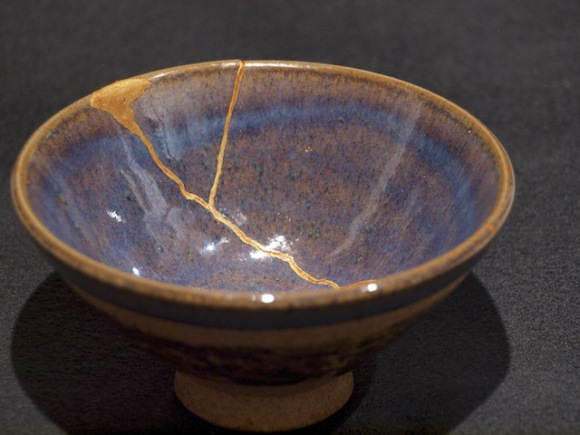Thursday, August 22, 2013
Repairing the Shattered World
The sixteenth-century Jewish mystic Isaac Luria offered an interesting explanation of the mess the world is in. God, said Luria, created the world by placing his own divine light into vessels. These containers could not hold the powerful essence of God, and shattered into shards. The calling and duty of religious folk is tikkun ha-olam, the "repair of the world." By ritual acts and by living day to day according to God's commandments, the broken is brought together, the shattered is made whole. In this way, the world is made into a place that is worthy of the Messiah who is to come.
Although Christians and Jews might disagree about whether the Messiah is coming for the first or second time, I as a Christian find the call to tikkun ha-olam a much more compelling notion than the idea of waiting passively for the Lord to arrive, cause the rapture, initiate the war of Armageddon, etc., etc. For centuries, Christians have scanned the news of the day and searched for events that seem to be congruent with the fierce and cryptic poetry of the Book of Revelation. By this reading, the End Times never quite seem to get here, and it's back to the drawing board to interpret the signs of the times.
While others dissect apocalyptic literature, I am going to do what I can to practice tikkun ha-olam. I see the hungry every day, and I do my best to feed them. I serve in an organization in my community that provides shelter to children in state custody, counseling to the addicted, and care for the victims of domestic violence. I know my local political leaders and leaders of city government, and I don't hesitate to discuss my concerns about how to make a better community with them.
In classical theological terms, this makes me a "post-millennialist." I'm not waiting around for the Messiah to show up to fix the world. I'm doing my small part to assemble the shards that come before me.
Can you find opportunities to practice tikkun ha-olam in your patch of the world? What can you and I do to make the world more just, more decent? How can we be better stewards of the gifts of nature? How can we put the pieces together and make better vessels where we live and work?
The picture that heads this post is an example of the Japanese art of kintsugi, or "golden joinery." When a precious vessel is broken, it is repaired using a lacquer made with powdered gold. The cracks gleam with the beauty of the artist's hand, and show that care and love have gone into the repair. Let's use the same love and care in repairing the broken world.
Subscribe to:
Post Comments (Atom)

No comments:
Post a Comment